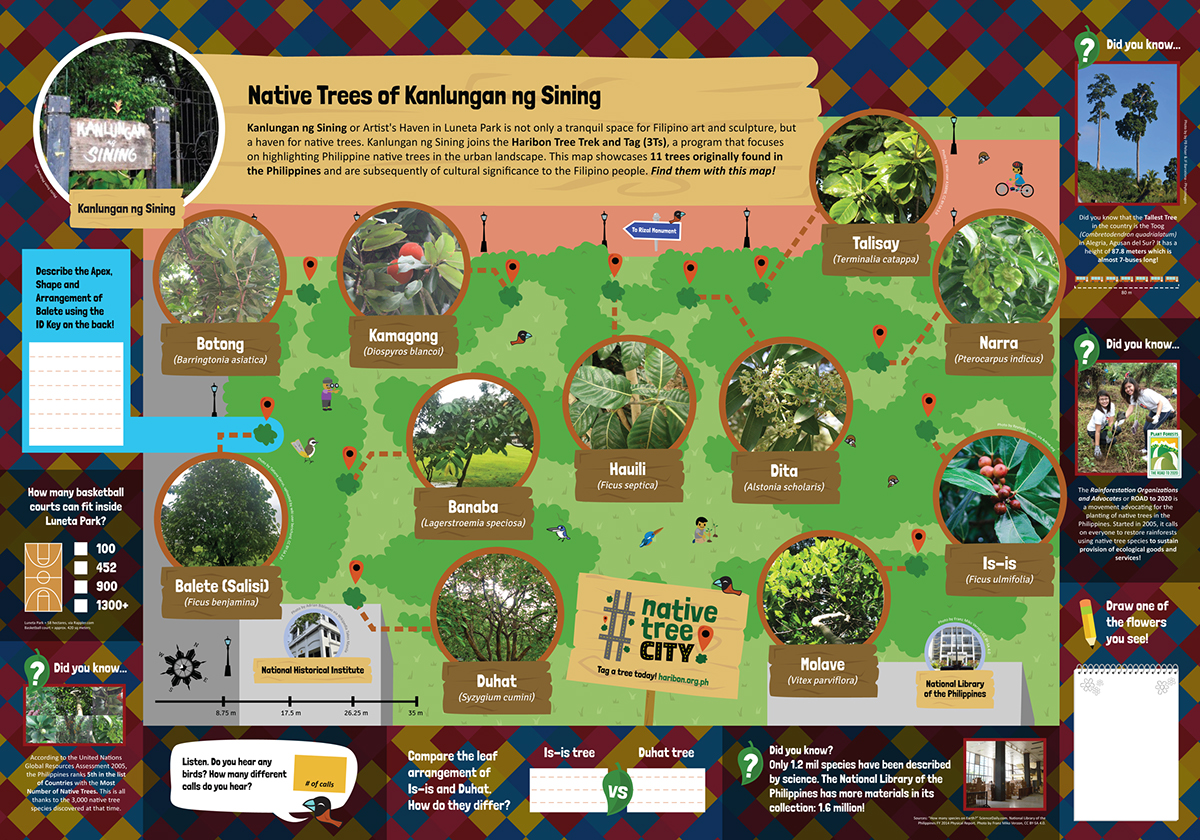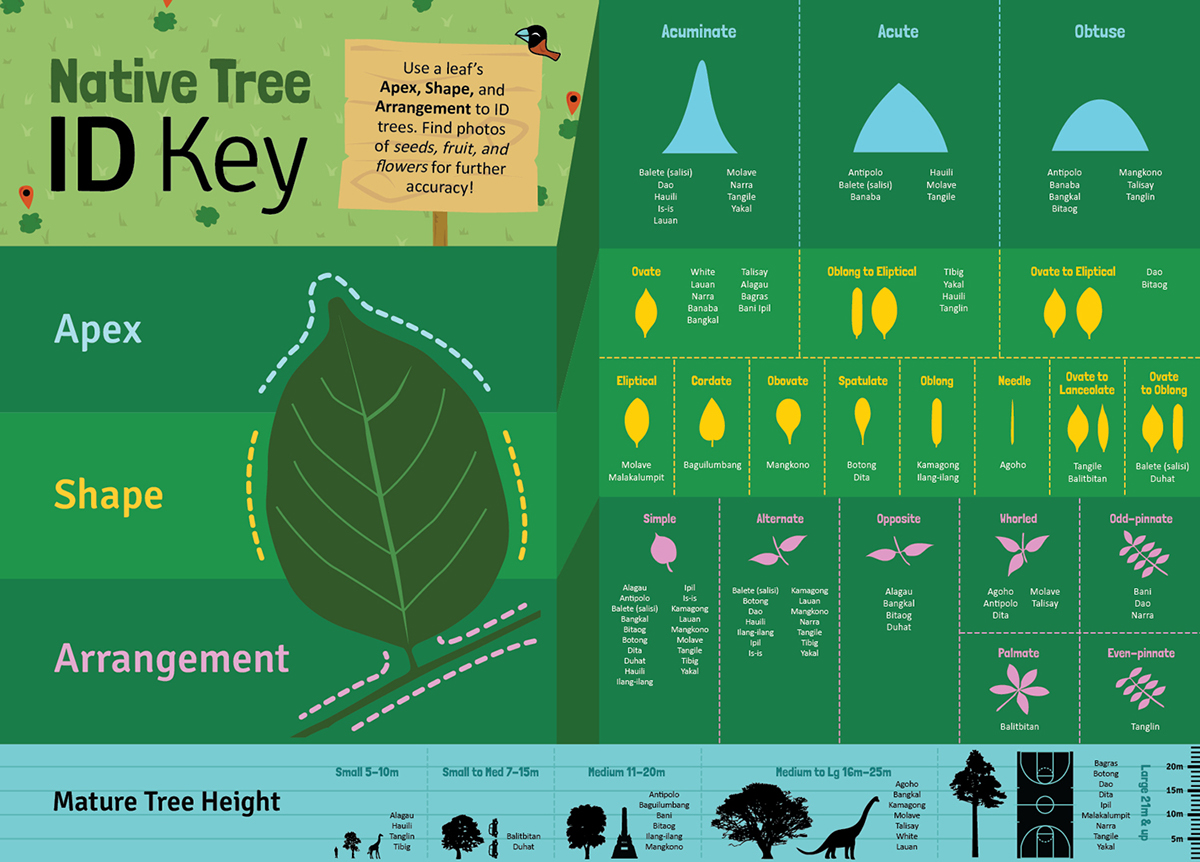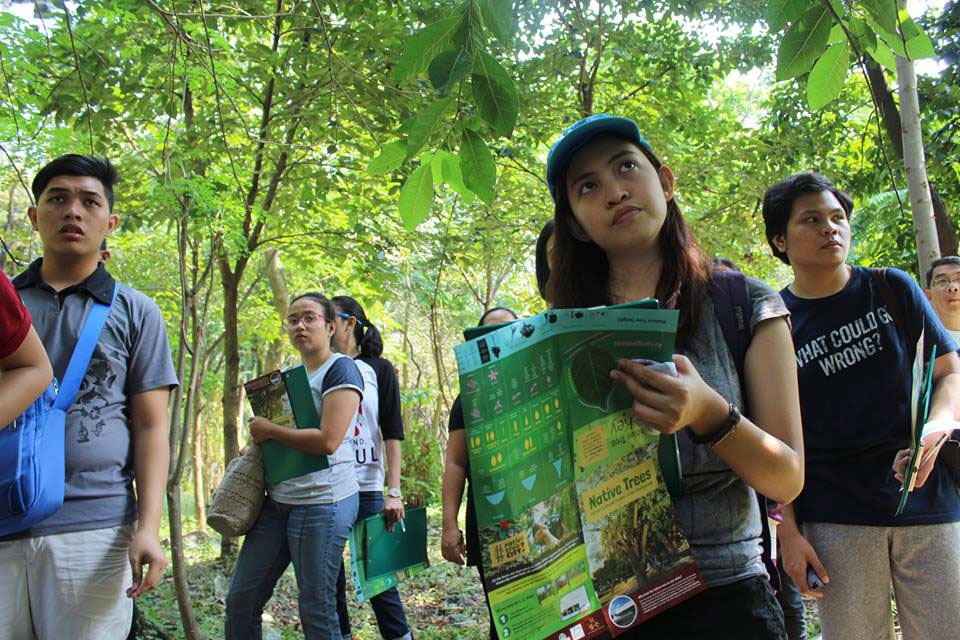




During the conceptualization phase, my collegue Raiza and I discussed that the ID key should be seen first when opened like a book, and then the entire map revealed when completely open. Background photo by Ana "Nikki" Almazar.

The maps and ID key were designed to help people identify trees indigenous to the Philippines in their neighborhoods. Indigenous or native trees are important for local ecosystems and biodiversity to thrive, but a trend of planting fast-growing exotic trees in the Philippines has hindered these natural processes. Photo by Ana "Nikki" Almazar.

Along with the ID key comes a map of a particular site in Metro Manila. In the background is Forester Raz Ripalda, an expert on local trees, leading a "tree trek" in Luneta Park, Manila. Photo by Ana "Nikki" Almazar.

Training Specialist Raiza Elumba holding the native tree ID key she conceptualized with Forester Raz Ripalda of the Haribon Foundation. Photo by Ana "Nikki" Almazar.

The maps were then used in free "Tree Treks" where the general public were invited to a tree tour led by foresters & experts on trees. Photo by Jennie Bonajos.
My collegues, Training Specialist Raiza Elumba & Forester Raz Ripalda of the Haribon Foundation conceptualized a tree ID key that could be used by anyone to identify certain species of trees indigenous to the Philippines. They shared the concept with me to design the key, along with the request to design "native tree maps" illustrating the locations and species of native trees from Raz's Google Earth maps of 3 locations in Metro Manila.
The project started in October of 2015, and all 3 maps were completed by late February 2016.

